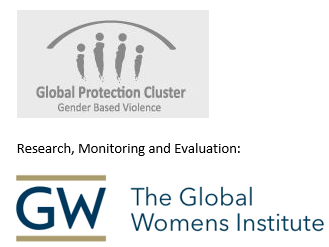- Humanitarian actors often operate according to short funding cycles and according to the expectation that they will exit a setting when the focus shifts to development. Some INGOs have very clear exit criteria that assist them in determining when to leave. Others may leave a setting based on the absence of emergency funding and/or a shift in donors from emergency to development.
- Many international VAWG actors must adapt to this reality of being in a setting for a limited time, even though VAWG necessitates on-going work in all settings. As described in the response programming, it is commonly accepted that in the early stages of an emergency the focus is on what is identified as life-saving interventions, such as ensuring basic protections for those at risk of VAWG as well as health and psychosocial care for survivors. After the emergency wanes activities shift to a broader focus including capacity building of key systems (e.g. health, psychosocial, security and justice sectors) as well as reforms of laws and policies relevant to VAWG. A major goal of VAWG work in the post-emergency phase is often to assist in building systems and structures that can be sustained even when an international aid agency leaves.
- In terms of prevention, it is similarly important to work for short- and medium-term results but within a framework of a long-term strategy for the elimination of VAWG. Efforts to address VAWG must support a long-term perspective that recognizes and addresses the drivers of a particular type of violence. This long-term perspective must be recognized in any prevention framework.
